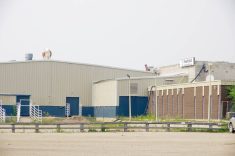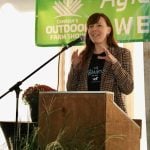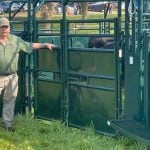VILNA, Alta. – If Gloria Oughton had gazed into a crystal ball as a teenager, she probably never would have seen herself on a Charolais ranch in northeastern Alberta.
Dreams of becoming a model in Calgary faded when she and her husband Trace moved to Vilna 20 years ago, to an old farmhouse with no running water or heat. Gloria laughs when she recalls their struggle to keep warm on December nights by burrowing under loads of blankets, only to discover in the morning that the blankets were frozen to the wall.
Read Also

How a cycling theory can help ranchers boost profits
By focusing on relatively simple, small changes, farmers and ranchers can see big results
Trace was raised in Calgary and Gloria grew up on a farm near Consort. Both knew they wanted to farm. They chose Vilna, near St. Paul, because they liked what they saw during fishing trips to the region. Now they’re so busy on the ranch there’s little time for fishing.
“At the time we were too busy to even think about it being that much of a hardship,” Gloria said. Now they stay because they love it and can’t see how life in the city could compare in terms of rewards.
With limited experience, but plenty of gumption in the first year, they started with 24 dairy cattle, a few pigs and some chickens.
The dairy cows were bred to beef bulls, most of them Charolais. Their red factor Holsteins resulted in tan calves that sold for a good price at the auction mart.
Today the Oughtons have a beef herd of about 90, with purebred Charolais and a small commercial herd. They own about 300 acres and rent some pasture and hay land.
The switch to purebreds came after they realized they could run a smaller herd and get a better return on calves, compared to commercial grade cattle. Females not good enough to be registered end up in the commercial herd.
“My culls are good enough that I can put them in my commercial herd … and cross them,” said Gloria.
At Celestial Charolais, she runs the ranch while Trace works in nearby Vilna, managing a seed cleaning plant. Gloria said she now sees more women farming on their own.
“I think they were always one of the major components of agriculture. They just never got the credit for it.”
To keep up with the industry, she reads and attends clinics and seminars. She has mastered the business well enough to judge cattle and gain the respect of other cattle producers, who say she has an excellent eye for good stock.
Gloria believes it’s partly a woman’s touch that makes a good cattle operation, because women are more willing to nurture each animal.
“It wouldn’t matter if I had 400 cows. It would be the same. Everybody would have a name and I would know them all,” she said.
A coup occurred this spring when a Celestial-bred bull was named reserve grand champion and topped the Calgary Charolais Bull Sale at $10,000.
Introduce new genetics
Gloria keeps a herd sire and does her own artificial insemination work to introduce new genetics. Although performance is the most desirable trait, animals have to be easy calvers and docile so she can manage them on her own. Purebred cows calve in January and the commercial cows come later.
Calves are expected to gain 45 kilograms a month and she likes to see six-month-old calves weigh 320 kg.
Customer liaison is a large component of their operation. All bull buyers are contacted after the breeding season to see how the animals performed.
“In February I’m on the phone, checking back with all my customers. … You have to have good relations with your customers or you’re going to lose them. You have to do a lot of P.R. work.
“I can’t afford to be selling hard calvers. That would haunt you,” she said.
It’s a long way from the runways and stage lights which Gloria gave up. Now she does some occasional modelling in Edmonton. Her self-confidence has developed through pulling her own weight on the ranch and learning how to market and compete – in what is in many ways still a man’s world.
As well as running the ranch, Gloria has been a delegate to the Alberta Cattle Commission for the last few years.
“I’m interested and I want to direct my industry,” she said.

















